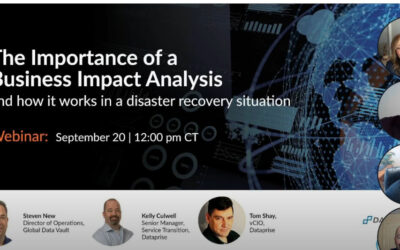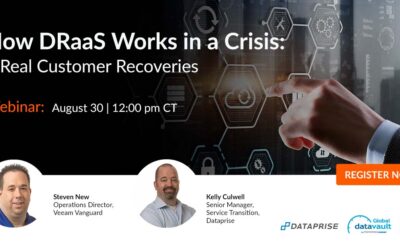Many organizations have annual disaster recovery (DR) test requirements, whether to run production operations from a secondary facility for several days or test the functionality of systems and applications running in a DR facility while production workloads run as usual. Every business should have a disaster recovery plan and perform a DR test, especially with recent virus and ransomware activity.
In the past, disaster recovery was much more complex. However, virtualization and cloud technologies significantly improved DR capabilities and the ability to run workloads in separate or multiple locations. While advantageous, it is crucial to check the functionality of systems, processes, and people resources.
How often should I perform a disaster recovery test?
Your business needs and requirements will determine the testing frequency, but an annual test is usually sufficient for many. It is essential to schedule the test well in advance, especially if it involves a third party. Finding time for all parties as the end of the year approaches will be difficult. If you make significant infrastructure or application changes, it may be worth performing an additional test.
What are the goals of a disaster recovery test?
While you may think the goals of a DR test are obvious, setting objectives helps keep tasks in scope and focused. Implementing a disaster recovery testing plan helps. You want to verify connectivity and application functionality and ensure you have the appropriate users available to assist. Believe it or not, running into problems during your DR test can be a good thing so you can resolve the issues. You do not want to encounter issues during an actual emergency!
Some issues we have discovered while performing DR tests for customers:
- Old, unsupported, or end-of-life operating systems
- Unsupported operating systems that are too new (beta, just released)
- Old versions of virtual machines and hypervisors
- Unpatched servers take a long time to bring up, as they apply patches automatically. (Note: Be sure to follow regular patching practices.)
- Incomplete networking documentation
Disasters can happen at any time. Performing a disaster recovery test allows organizations to prepare ahead of a crisis and remediate issues before a disaster occurs. In addition to applications and systems testing, tests will enable you to fine-tune call trees, identify application owners and stakeholders, and understand the process of turning on DR workloads.
More Disaster Recovery Articles
Five Things Every IT Department Should Do This January
Whether it's resolutions, strategic objectives, KPIs, or basic planning, January is when we all renew our focus for the new year. As an IT professional, your thoughts are focused on better meeting business goals and aligning your team to support business growth...
Webinar: The Importance of a Business Impact Analysis
The following is a lightly edited transcript of our September 2022 webinar on the importance of Business Impact Analysis. The speakers are: Kelly Culwell, Senior Manager, Service Transition, Dataprise Steven New, Director of Operations, Dataprise Tom Shay, vCIO,...
Why RPO and RTO are so important to effective disaster recovery
Business continuity is at the forefront of most IT departments. Between human error and hardware failure, no environment is completely free of risk. And with 236.1 million ransomware attacks worldwide during the first half of 2022, odds are that your organization will...
Webinar: How DRaaS Works in a Crisis
Below is a lightly edited transcription of our recent webinar: Kelly02:55 Disaster recovery really isn't fun, right? It's not something that anybody ever wants to have to go through, but unfortunately, a lot of businesses do. We've had discussions before about what to...




0 Comments